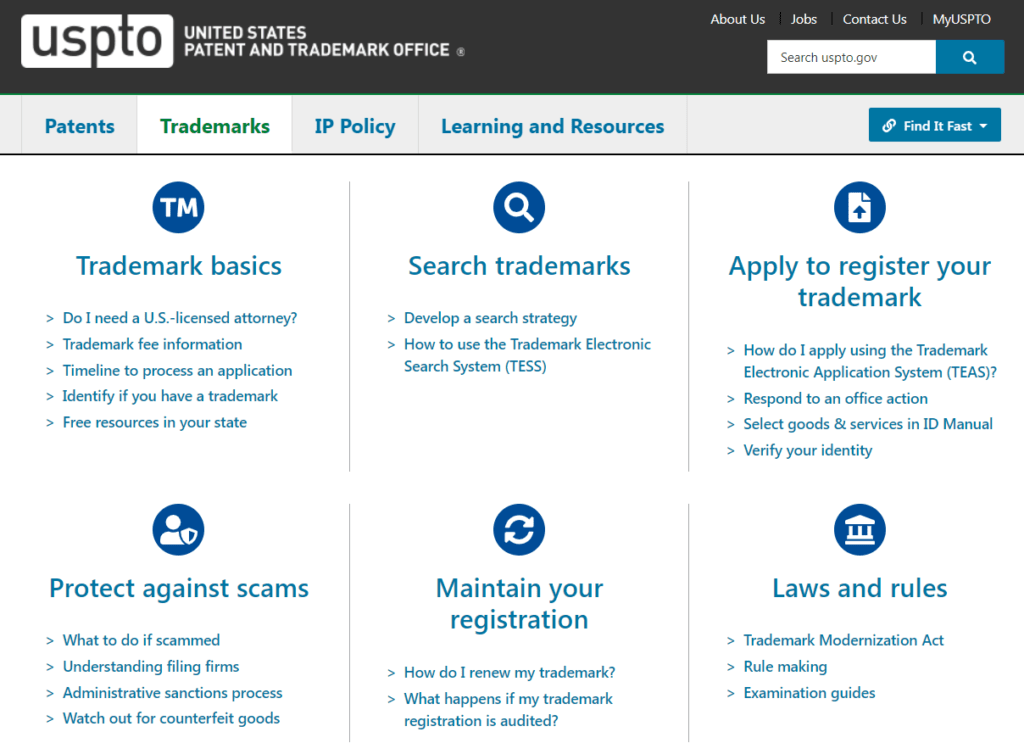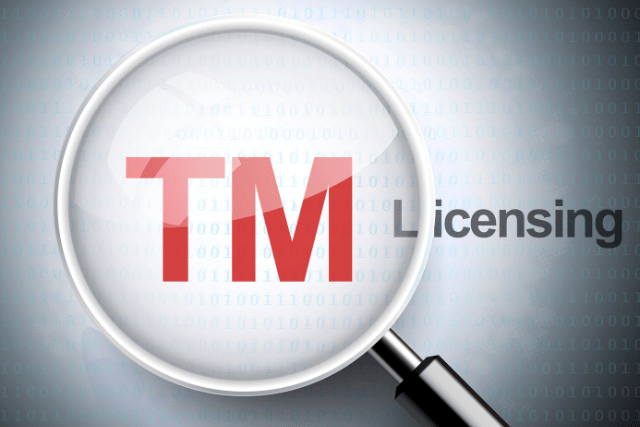Do you want to register a business trademark for your brand? If yes, you have taken a good step toward protecting your business from copycats.
Keep reading to learn more about trademarks and related procedures.
Table of Contents
Introduction
In today’s fast-paced business world, protecting your brand identity is more important than ever. That’s where registering a business trademark comes into play.
But with so many rules and regulations, the process can seem daunting. Fear not! In this step-by-step guide, we’ll break down everything you need to know about trademark registration for your brand – from understanding what trademarks are and why they’re essential to navigating the application process like a pro.
So grab a coffee, get comfortable, and dive in to fortify your brand’s legal protection.
Key Takeaways
- A trademark is a unique identifier for a business’s products and services, allowing customers to quickly recognize and distinguish the brand from others in the marketplace.
- Registering a trademark is crucial for legal protection, exclusive rights to use the trademark, increased brand recognition and value, and preventing infringement.
- Conduct thorough research before filing a trademark application to ensure your brand name or logo is unique and does not infringe on anyone else’s intellectual property rights. Choose a strong mark that can be easily associated with your brand.
- Identify your mark’s appropriate class of goods or services when registering it with the USPTO or local government authority. Applying requires detailed information about your business and its activities.
- Ensure proper maintenance of vigilance against infringement after registration has been approved by relevant authorities to enjoy legal protection over the long-term success of your business.
Understanding Trademarks
A trademark is a symbol, word, or phrase that distinguishes one brand from another and protects intellectual property rights.

What Is A Trademark?
A trademark is a unique identifier for a business’s products and services, allowing customers to easily recognize and distinguish the brand from others in the marketplace.
This identifier can be anything like a name, logo, slogan, or even specific product packaging designs that make it distinctive.
By securing an officially registered trademark for your business, you establish exclusive rights to use this identifying mark and add credibility and legitimacy to your brand.
This helps build consumer trust while enhancing public recognition and perception of your company.
Why Do You Need One?
A trademark is an essential asset for any business or brand. It serves as a unique identifier of your products and services, distinguishing them from others in the market.
Trademarks provide legal protection for your brand name, logo, and other identifying marks by preventing their unauthorized use by competitors or copycats.
A registered trademark means you have exclusive rights to use it for commercial purposes within the chosen class of goods or services. This registration helps you establish ownership of the mark and enhances its value over time, making it easier to license out to partners or sell if you decide to exit the business later.
Types Of Trademarks
There are several types of trademarks that businesses can register for protection. These include:
- Wordmark – A word or phrase used as a trademark without any specific design.
- Design mark – A trademark with a distinctive logo, symbol, or design element.
- Combination mark – A hybrid of a wordmark and a design mark, where elements are combined to create a unique brand identity.
- Service mark – Used to identify and protect a business that provides services rather than physical goods.
- Collective mark – Used to identify the membership within an organization, such as a union or association.
- A certification mark indicates that goods and services meet specific organizational or authorities’ standards.
- Sound mark – Consisting of sounds alone, such as jingles and music notes.
By understanding the types of trademarks available, businesses can choose the appropriate registration for their brand name, logo, or services.
The Importance Of Trademark Registration
Trademark registration is crucial for legal protection, exclusive rights to use the trademark, increased brand recognition and value, and prevention of infringement.
Legal Protection
Trademark registration provides legal protection for your brand name or logo. Once registered, you can use the trademark with your products or services.
This means that no one else can use a similar mark in a way that could confuse consumers regarding the source of the goods or services being offered.
For example, if you own a coffee shop and register your business name and logo as trademarks, you can prevent other coffee shops from using a similar name or logo design that may confuse customers into thinking they are affiliated with your business.
Exclusive Rights To Use The Trademark
Once a trademark is registered, the owner can use the mark with their goods or services. This means that other businesses cannot use a similar mark that will likely confuse consumers.
It also gives the trademark owner legal recourse if someone does use their mark without permission. With this level of protection, businesses can be confident in investing time and resources into developing their brand, knowing they have legal ownership over it.
In addition, having exclusive rights to a trademark can increase brand value by preventing others from diluting its reputation through inferior products or services.
Increased Brand Recognition And Value
Registering a trademark for your business can increase brand recognition and value. Securing exclusive rights to use your mark distinguishes your brand from others in the marketplace and helps build customer trust.
A strong trademark can also increase the perceived value of your brand, making it more likely that consumers will choose your products or services over competitors. Additionally, registering a trademark sends potential investors and partners a message that you are serious about protecting your intellectual property rights and building a reputable brand.
Preventing Infringement
Once you have successfully registered your business trademark, monitoring and defending it against potential infringement is crucial.
This can involve conducting regular searches for unauthorized use of your trademark and taking legal action if necessary. Infringement can come in many forms, including counterfeit goods, domain name hijacking, and unauthorized use of your brand’s logo or slogan.
Proactively protecting your trademark rights will maintain exclusivity over your brand identity and prevent customer confusion.

Step-by-Step Guide To Registering A Business Trademark
Learn how to conduct a thorough trademark search, choose a strong trademark, identify your trademark class, file a successful application with USPTO, and maintain and protect your brand by following our step-by-step guide to registering a business trademark.
Conducting A Thorough Trademark Search
Before filing a trademark application, it is crucial to conduct a thorough search to ensure that the brand name or logo is unique and does not infringe on anyone else’s intellectual property rights.
This involves searching through different databases, including the USPTO’s Trademark Electronic Search System (TESS), to identify any existing trademarks that may be similar to the proposed mark.
For example, if you plan on registering a clothing line under the name “Serenity Apparel,” you would want to search for similar apparel brands in your desired trademark class and assess whether there could be any confusion between your brand and theirs.
Conducting a comprehensive trademark search is critical because applying with an already registered mark can result in legal disputes and costly litigations down the road.
Choosing A Strong Trademark
To register a strong trademark, you must choose a mark that can be easily recognized and associated with your brand. This means avoiding generic or descriptive terms and favoring unique or arbitrary ones.
For example, Apple is a stronger trademark than Computer Company because it is distinct and unrelated to computers.
Conducting a thorough trademark search before settling on a name or logo for your brand is important. This can help identify potential conflicts and allow you to make informed decisions about your mark.
You can use online search tools like the TESS database provided by USPTO and consult with an attorney specializing in trademark registration for guidance; also, keeping track of renewal dates is crucial after registration has been approved by the relevant authority.
Identifying Your Trademark Class
When registering a trademark, it’s crucial to identify the appropriate class of goods or services that the mark will represent. The trademark registry offers 45 classes, each representing a specific category of goods or services.
Choosing the correct class is important for securing adequate protection for your brand name.
It’s essential to conduct thorough research before choosing a class to ensure that your trademark receives maximum legal protection. This step requires careful consideration because selecting an incorrect category can undermine the effectiveness of your registration and make it easier for another business owner to register a similar mark in another category.
Filing A Trademark Application With USPTO
To file a trademark application with the United States Patent and Trademark Office (USPTO), you must thoroughly search to ensure your brand name or logo is unique.
Once you’ve confirmed that your trademark is available, you must choose the appropriate classes for your registration.
Next, complete an online application through the USPTO’s Electronic Filing System (TEAS). This process requires detailed information about your business and mark, including images and descriptions.

Once submitted, expect to receive an examination report from the USPTO within six months of filing. If there are any issues with your application, such as conflicting marks already in use, you may need to respond to office actions from the examiner before proceeding with registration.
It’s important to remember that obtaining legal protection through trademark registration can take up to two years.
Responding To Office Actions, If Necessary
After filing your trademark application with the USPTO, you may receive an office action if your registration has issues or objections. An office action is a written communication from the examining attorney that outlines any problems or concerns with your application.
If you receive an office action, responding promptly and thoroughly to ensure your trademark is registered is important. You will have six months from the date of the office action to file a response, which should address all concerns raised in the letter.
You may also need to provide additional information or evidence to support your application.
Maintaining And Protecting Your Trademark
Once your trademark is registered, it’s important to maintain and protect it to preserve its value. One of the most effective ways to do this is by monitoring for potential infringement regularly.
In addition, you must file renewals periodically to ensure that your trademark remains current and active. In India, trademarks are typically valid for ten years from the date of registration and need to be renewed after every ten years.
These steps will help enforce your brand identity rights and prevent others from diluting or stealing your intellectual property.
Required Documents For Trademark Registration
To register a business trademark, it is important to prepare the required documents, such as power of attorney, authorization letter, identification, address proof, and a clear trademark image.
Power Of Attorney
To register a business trademark, you must provide a power of attorney document. This legal document authorizes someone else to act on your behalf during registration.
The person authorized by a power of attorney is called an “attorney-in-fact” or “agent.”
When filing for a trademark, it’s important to have an experienced agent who can navigate the complex legal requirements and procedures involved in getting your brand registered.
Your chosen attorney-in-fact will manage all aspects of the application process, including responding to office actions if necessary.
Make sure you choose someone trustworthy and reliable as your agent because their actions during the registration process will reflect directly on your brand’s reputation and integrity.
Authorization Letter
An authorization letter is a document that gives someone else the legal authority to act on behalf of the trademark owner. This letter is necessary if someone other than the owner files the trademark application, such as a lawyer or agent.
For example, suppose a business owner hires an attorney to register their brand name as a trademark. In that case, they must provide an authorization letter stating that their attorney can act on their behalf during the registration process.
In short, an authorization letter is vital during trademark registration because it provides legal proof that someone else has been granted permission from the owner of a brand name or logo®️to complete critical tasks associated with registration and protection against infringement.
Identification And Address Proof
To register your business trademark, you must provide identification and address proof. This helps verify the applicant’s identity and ensure they can apply.
Commonly accepted forms of identification include a valid passport, driver’s license, or Aadhar card.
Ensuring that these documents are current and up-to-date is important, as outdated information can delay the processing of your application.
Overall, providing proper identification and address proof is just one step in a comprehensive process toward trademark registration that requires careful attention to detail and thorough consideration of all aspects involved.
Trademark Image
One crucial aspect of trademark registration is selecting and submitting a trademark image. This image can be a logo, wordmark, or brand symbol.
The chosen trademark image must be unique and not infringe on existing trademarks. Ensuring the submitted image accurately reflects the brand’s identity and values is essential.
Submitting a well-designed trademark image can significantly impact a brand’s recognition and value in the market. Famous logos with high recognition include Coca-Cola’s classic cursive lettering and McDonald’s golden arches.
How to Register a Trademark in India?
Registering a trademark in India involves a series of steps. The process is overseen by The Controller General of Patents, Designs, and Trade Marks, Ministry of Commerce and Industry, Government of India.

Here’s a general outline of how to register a trademark in India:
- Trademark Search: Before you begin the registration process, conduct a thorough search to ensure that your desired trademark isn’t already registered or in the process of being registered by someone else. The Indian Trade Marks Registry provides an online search portal for this purpose.
- Trademark Application Preparation: Prepare your application if your desired trademark appears available. The application should include the trademark, the goods or services it represents, the class under which it falls (according to the Nice Classification), and the name and address of the trademark owner. You can apply as an individual, a business organization, or a legal entity.
- Filing the Application: The application for registration can be filed at one of the five Trade Marks Registry Offices, depending on the jurisdiction (which is usually where your business is located or where you intend to use the trademark). These offices are in Ahmedabad, Chennai, Kolkata, Mumbai, and New Delhi. Alternatively, you can file your application online through the Trade Marks Registry’s official website. There are various forms for different types of applications (TM-1, TM-2, TM-51, etc.), so make sure to use the correct form.
- Examination of Application: Once your application is filed, an examiner will review it according to Indian trademark law. The examiner might accept your application conditionally or object to it. If objections arise, you will receive an examination report and must respond within a month.
- Publication in the Trade Marks Journal: If your application is accepted (absolutely or with conditions you accept), your trademark will be published in the Trade Marks Journal. This allows others to oppose your registration if they believe it infringes on their rights.
- Opposition Period: After your mark is published in the Trade Marks Journal, there is a four-month period where others can file an opposition. If your mark is opposed, a legal proceeding will resolve the dispute.
- Trademark Registration: If there are no objections, or if any opposition is decided in your favor, your trademark will be registered, and you will receive a registration certificate. Once registered, your trademark is protected in India for ten years from the date of application.
- Renewal: You can renew your trademark indefinitely every ten years to protect it. Your trademark will be removed from the Trade Marks Register if not renewed.
Remember to consult with an attorney or expert to ensure you understand all the requirements and that your application is properly prepared and filed. Laws and procedures can change, and an expert can provide the most current advice.
What is an International Trademark?
An international trademark, often facilitated through the Madrid Protocol, is a mechanism that allows a trademark owner to seek protection for their mark in multiple countries with a single application. Rather than filing separate national applications in each country, the owner can streamline the process, making it more efficient and cost-effective.

Here’s a basic overview of the process:
- Essential Registration or Application: This is essentially your initial trademark registration in your home country or the application for such registration. It forms the basis for your international application. Before seeking international protection, You must have a trademark in your home country. For example, if you’re a U.S.-based business, you would first file with the U.S. Patent and Trademark Office (USPTO).
- International Application: After the domestic registration or application, you can file for an International Application through your national or regional trademark office (known as your “Office of Origin”). You must identify the countries where you wish to protect your trademark, pay the necessary fees, and fulfill the language requirements. These countries must be members of the Madrid Protocol or the Madrid Agreement.
- Review by the International Bureau (IB): The International Bureau, part of the World Intellectual Property Organization (WIPO), reviews the international application. If the application is accepted, it will be recorded in the International Register, and a certificate of registration will be issued. The IB will then notify all the countries you have designated that you seek trademark protection.
- Review by Designated Countries: Upon receiving notification from the IB, each designated country will decide whether to grant or refuse protection following their national trademark laws. This can involve an examination of your mark, a search for conflicting marks, or an opportunity for third parties to oppose. If there are no issues after a certain period, typically between 12-18 months, the trademark will be protected in that country as if it had been registered directly there.
- Duration and Renewal: International registration of a trademark lasts for ten years. It can be renewed directly with the IB every ten years, upon payment of the relevant fees and will continue to have effect in the designated countries in which it has been accepted.
The Madrid system presents several advantages. You can file one application in one language and pay one set of fees to protect your trademark in territories of up to 124 members. You can also manage your portfolio of marks through a centralized system.
Please note, however, that while the international registration process simplifies initial filing and reduces costs, it does not guarantee that registration will be granted in every jurisdiction. Each country you designate will decide based on its trademark laws. Additionally, the Madrid system doesn’t cover all countries, so for those countries not covered, you would need to apply directly to the country’s own trademark office.
Which one should you protect: logo or brand name?
Whether to protect your brand name or logo (or both) as a trademark depends on the specifics of your business and how you present your brand to the public.
Here are some factors to consider:
Brand Name: If your brand name is the primary way customers recognize and refer to your business, it might be more important to protect the brand name. This is often the case if your brand name is unique and doesn’t merely describe your products or services.
Trademarking your brand name can prevent other companies from using the same or a similar name, which could confuse your customers.
Logo: If your logo is unique and critical to your branding strategy, it might be worth protecting. A distinct logo can be a powerful visual representation of your brand and instantly recognizable to customers. Remember, though, that if you update your logo in the future, you will need to file a new trademark application for the new design.
Both: In many cases, protecting your brand name and logo can be beneficial, especially if they are integral to your brand’s identity. Registering gives you broader protection and can help prevent others from using similar names or logos. However, remember that each registration requires separate applications and fees so the cost will be higher.
It’s also worth noting that while a trademark can offer critical protection, it isn’t the only way to safeguard your brand. Depending on your specific circumstances, you might also consider other forms of intellectual property protection, such as copyright for original works of authorship (like advertising copy or website content) or patents for inventions.
Tips For Successful Brand Name Registration
Choosing a unique and distinctive name is crucial for successful brand name registration, conducting a thorough trademark search, keeping track of renewal dates, and avoiding common mistakes.
Choosing A Unique And Distinctive Name
Selecting a strong and memorable name is crucial for any brand identity, but it’s especially important regarding trademark registration. Choosing a unique and distinctive name that sets your brand apart from competitors is essential and cannot be easily confused with other trademarks.
To avoid infringement issues, it’s necessary to conduct extensive research before choosing a brand name. This involves performing online searches on various platforms such as search engines, social media platforms, domain registrars, business directories, etc., or even hiring an intellectual property lawyer to help verify whether your chosen mark infringes on any existing marks.
Conducting A Thorough Trademark Search
Before filing for trademark registration, it is important to conduct a thorough search to ensure that another business does not already register or use the chosen brand name and logo.
There are various ways to conduct a trademark search, including online databases such as the USPTO’s TESS database and an internet search.
For example, if you want to register the name “Apple” for your tech company, you must ensure that no conflicting trademarks are registered under similar names like “Appletree.”
Keeping Track Of Renewal Dates
It’s important to note that trademark registration isn’t a one-time task. Once a brand has successfully registered its mark, it must also keep track of renewal dates to ensure continued protection.
In India, for example, trademarks are initially valid for ten years and can be renewed indefinitely as long as the brand meets certain requirements.
To avoid missing key deadlines, brands should consider setting up reminders or working with an attorney who can help manage their intellectual property portfolio. Failing to renew a trademark could result in losing exclusivity over the mark and potentially even facing legal challenges from competitors or infringers.
Avoiding Common Mistakes
To avoid common mistakes when registering a business trademark, it’s crucial to take the time to conduct a thorough trademark search before applying.
This helps you identify potential conflicts with existing trademarks and avoid wasting time and money on an application that may be denied.
Another common mistake is failing to maintain and protect your trademark once registered properly. This includes monitoring for potential infringement, responding promptly to any instances of infringement, and renewing your registration on time.
Failure to do so can put the exclusivity of your brand at risk and leave you vulnerable to legal action.
Conclusion
Registering a business trademark for your brand is crucial to protect your intellectual property and increase brand recognition.
Following the step-by-step guide in this article, you can successfully register your trademark with the USPTO and enjoy exclusive rights to use it.
Conduct a thorough search, choose a unique name, identify the appropriate class, file an application promptly, and maintain vigilance against infringement. With careful attention to detail and perhaps consultation with a trademark attorney, you can ensure that your brand enjoys legal protection and continues to thrive.
Frequently Asked Questions
1. Why is it important to register a trademark for my business?
Registering a trademark helps protect your brand identity and prevents others from using similar branding that could confuse consumers. It also gives you legal rights to pursue legal action against those who infringe upon your trademark.
2. How do I choose the right trademark for my business?
When choosing a trademark, consider uniqueness, memorability, and relevance to your brand or industry. Conduct a thorough search beforehand to ensure that another business does not already use your chosen mark.
3. What steps are involved in registering a trademark for my business?
Registering a trademark involves conducting an initial search, filing an application with the USPTO, responding to any objections or inquiries raised by the examiner, and finally receiving approval and registration of your mark.
4. How long does registering a trademark for my business take?
The timeline for registering a trademark varies depending on several factors, including the backlog at the USPTO, whether any objections or inquiries are raised during the examination of your application, and how quickly you respond to those issues if they arise. Generally speaking. However, it can take anywhere from several months to over one year to complete the registration process.
5. Can I add more countries to my international trademark registration after it has been filed?
Including additional countries in international trademark registration is possible after submitting the initial application. By filing just one application with a single office, in one language, with one set of fees, and in one currency, trademark holders can ensure protection for their marks in multiple countries cost-effectively and efficiently, thanks to the Madrid Protocol.
6. What distinguishes product and service marks?
A product mark is specifically for things you can buy. It’s like a trademark, but it’s about goods instead of services. It could be a word, a symbol, a logo, or even a combination. It’s a way for a company to show that they made that product and stand out from their competitors.
On the other hand, service providers use service marks. Instead of physical products, they’re used to distinguish different services. It can be a word, a phrase, a symbol, or a design. Since there’s no physical package to mark, service marks are mostly used in service advertisements.
One cool thing is that the rights and protections for trademarks and service marks are the same. So whether it’s a product mark or a service mark, it’s all about giving companies the recognition they deserve.







